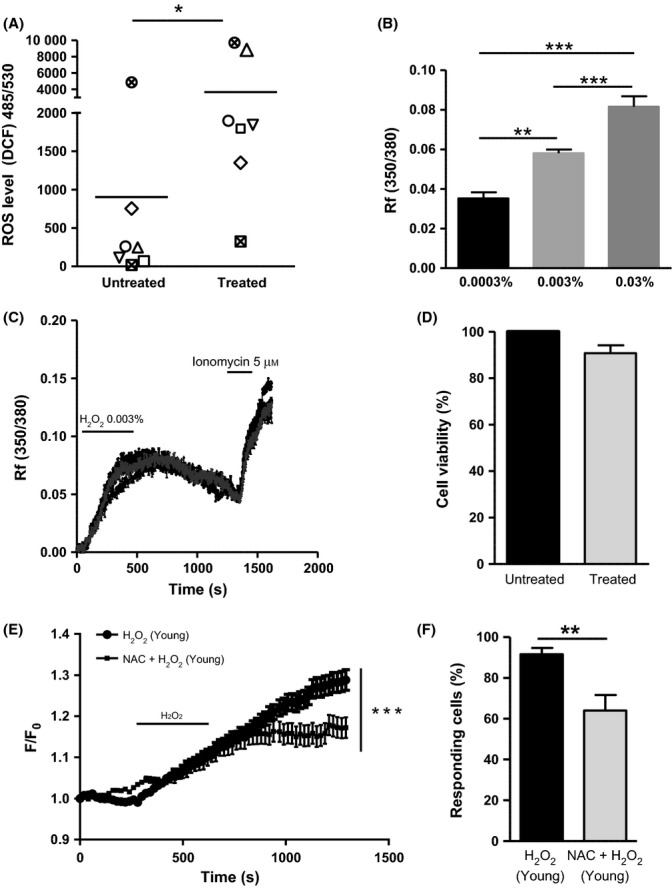Figure 2.

Induction of acute oxidative stress using H2O2 in the urothelial cells from young mice causes increase in intracellular calcium, which is attenuated by a pretreatment with the antioxidant N-acetyl-cysteine (NAC). (A) Detection of intracellular reactive oxygen species (ROS) level using DCF probe showing an increase in ROS level after exposure of the urothelial cells to 10 min 0.003% H2O2 (N = 7; Students T-test, *P = 0.04). (B) Dose-dependent increase in intracellular calcium in response to three different concentrations of H2O2 (0.0003%, 0.003% and 0.03%, one-way ANOVA followed by Bonferroni post hoc test; **P < 0.05 and ***P < 0.001 significant by Bonferroni). (C) Representative traces showing changes in urothelial intracellular calcium following 10 min 0.003% H2O2 and 3 min 5 μm ionomycin application. (D) MTT cell viability assay shows no change in urothelial cell viability following 10 min 0.003% H2O2 treatment (N = 3). (E) Calcium imaging data show an increase in intracellular calcium in the urothelial cells after induction of oxidative stress (N = 5, n = 169). The response is significantly attenuated by 1 h preincubation with the antioxidant NAC (N = 4, n = 117; two-way ANOVA, ***P < 0.0001). (F) Percentage of responding cells to H2O2 ± NAC (Student’s t-test, **P = 0.008).
